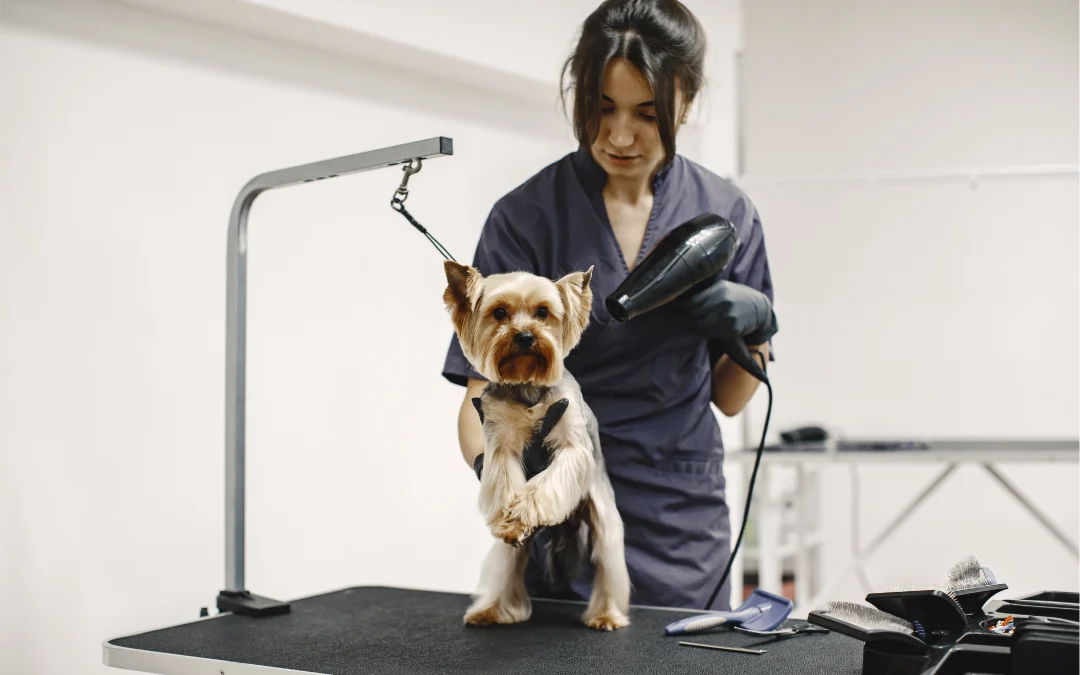Grooming is essential for your dog’s health, but how often should you schedule grooming sessions? The answer depends on several factors, including your dog’s breed, coat type, and overall health. A complete grooming schedule will help ensure that your dog stays clean, comfortable, and healthy throughout the year.
- Grooming Long-Haired Dogs: More Frequent Care Required
Long-haired dogs, such as Shih Tzus, Poodles, and Collies, have coats that require regular care to prevent mats and tangles. They may need more frequent grooming than shorter-haired breeds.
How Often to Groom Long-Haired Dogs:
Brushing: Daily to every other day to prevent tangles.
Bathing: Every 4-6 weeks, depending on their lifestyle.
Nail Trimming: Every 4-6 weeks.
Haircuts: Every 6-8 weeks, depending on the breed and desired length.
- Grooming Short-Haired Dogs: Less Maintenance, But Still Important
Short-haired breeds, such as Boxers, Beagles, and Dachshunds, generally require less maintenance but still need regular grooming to manage shedding and maintain skin health.
How Often to Groom Short-Haired Dogs:
Brushing: Once a week to remove loose hair.
Bathing: Every 6-8 weeks, or when your dog gets dirty.
Nail Trimming: Every 4-6 weeks.
Ear Cleaning: Once a month, or as needed.
- Grooming Dogs with Special Needs: Custom Schedules for Specific Issues
Certain dogs may have special grooming needs based on their health or lifestyle. For example, senior dogs, dogs with skin conditions, or dogs with excessive shedding may require extra attention.
How Often to Groom Dogs with Special Needs:
Dogs with Skin Conditions: Bathing may need to occur more frequently, and special medicated shampoos may be required. Consult with your vet for a personalized schedule.
Senior Dogs: Regular brushing helps keep their skin and coat healthy as they age.
Excessive Shedding: More frequent brushing can help manage shedding, particularly during seasonal changes.
- Grooming Puppies and Young Dogs: Setting Good Habits Early
If you have a puppy, early grooming experiences are essential to ensure that they’re comfortable with the process as they grow. Start grooming them at a young age to build a positive relationship with grooming tasks.
How Often to Groom Puppies:
Brushing: Start brushing your puppy weekly to get them used to the sensation.
Bathing: Bathing is typically not needed until they are a few months old.
Nail Trimming: Start with small, gentle trims to avoid causing stress.
Ear Cleaning: Check their ears regularly to avoid infections.
- Adjusting Grooming Frequency with the Seasons
During seasonal changes, your dog may shed more heavily, especially in the spring and fall. This is an important time to increase your grooming efforts to manage shedding and keep their coat clean.
Seasonal Grooming Tips:
Spring/Summer: Increase brushing to manage shedding.
Fall/Winter: Dogs with thicker coats may require more frequent bathing and occasional trimming to maintain comfort.
- Listen to Your Dog’s Needs: Adapt the Schedule
While general guidelines are helpful, every dog is unique. Pay attention to your dog’s coat condition, comfort level, and overall health. If you notice changes in their behavior, coat, or skin, it may be time to adjust your grooming schedule.
Create a Grooming Schedule That Works for Your Dog
Knowing how often to groom your dog is key to maintaining their health and comfort. Whether you have a long-haired breed


Recent Comments